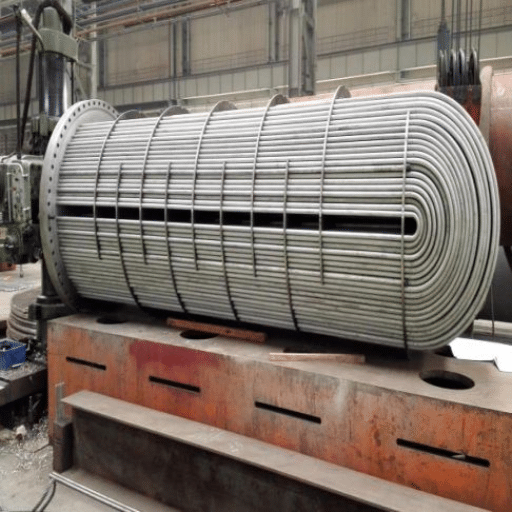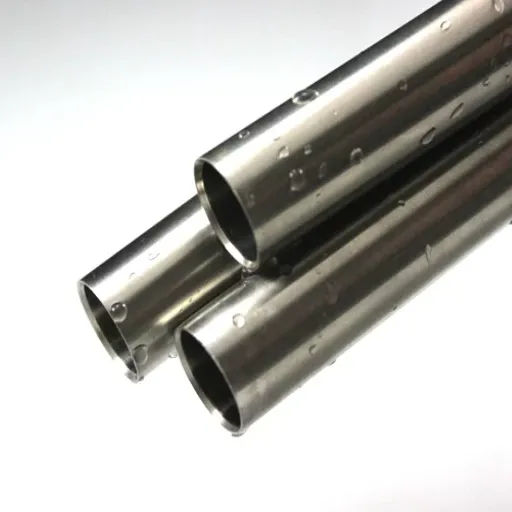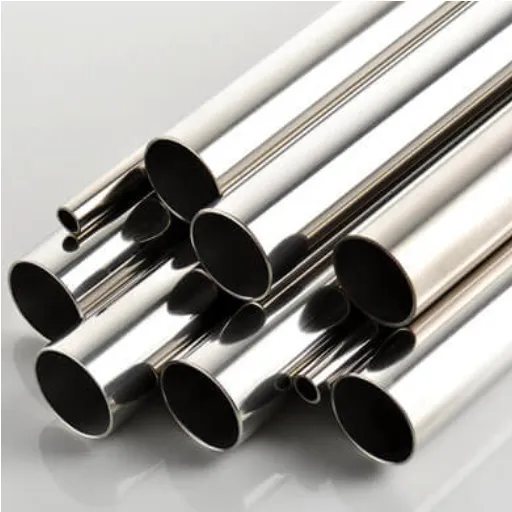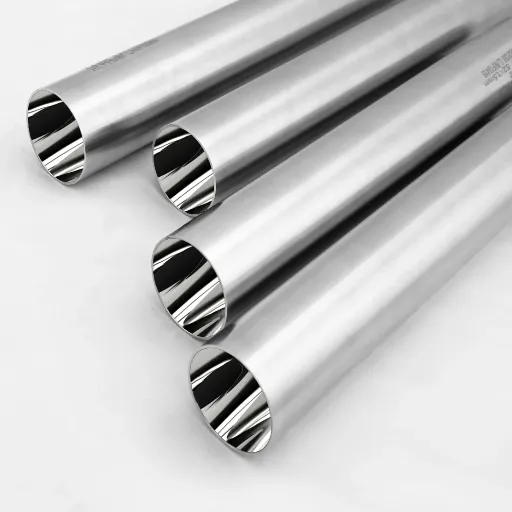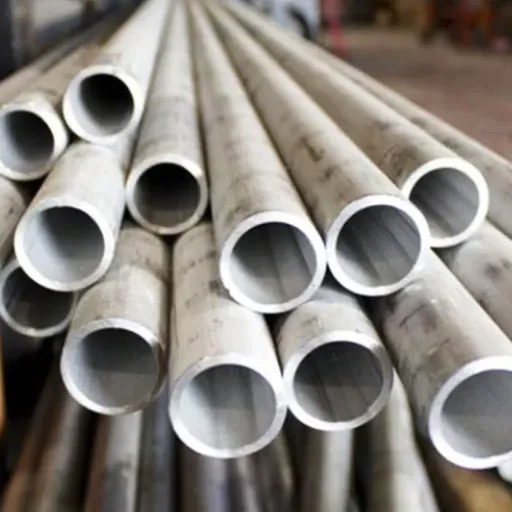Proper knowledge of materials’ heat conduction is a key factor for many industries such as engineering, manufacturing, building, and energy production. In all these industries, steel is the most significant among different metals due to its various applications, high strength, and much more. But if we consider thermal conductivity, where does steel stand compared to other metals? This post will clarify the meaning of thermal conductivity, take a look at the heat transfer characteristics of steel, and compare it with other metallic materials such as aluminum, copper, and brass. If you are an engineer, scientist, or just someone who is interested in the properties of materials, this article will enlighten you with the significance of thermal conductivity and the factors that lead to the choice of one material over others for specific applications.
Introduction to Thermal Conductivity
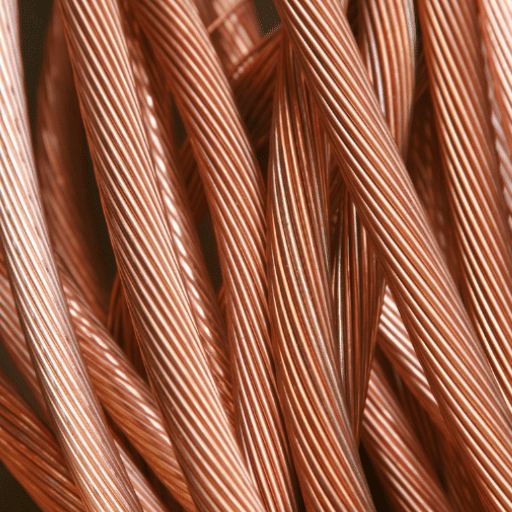
Thermal conductivity is the term that denotes the capacity of a substance to conduct heat. It represents the rate of heat flow through a material during a temperature gradient. Metals, which have a high thermal conductivity, are very good at heat conduction while, on the other hand, wood or plastic, which possess low thermal conductivity, are termed as insulators. This characteristic is very important in many different fields, such as electronics, construction, and manufacturing, where either heat management or insulation has to be done efficiently.
Definition of Thermal Conductivity
Thermal conductivity is a key property in engineering and material science that expresses the heat transfer capability of a material. It is often represented by the symbol k or λ and measured in the units of watts per meter-kelvin (W/m·K). The values of thermal conductivity can differ drastically from one material to another, thus affecting their use in particular applications. Here are five materials with their respective thermal conductivity values:
1
Silver
Thermal Conductivity: ~429 W/m·K
Notes: Silver, being one of the most thermally conductive materials, is used in applications that rely on efficient heat dissipation, such as in advanced electronics or thermal interfaces.
2
Copper
Thermal Conductivity: ~385 W/m·K
Notes: Widely applied in electrical and heating installations owing to its remarkable thermal and electrical conductivity.
3
Aluminum
Thermal Conductivity: ~237 W/m·K
Notes: Commonly used in heat industries like automotive and aerospace for its quality of being lightweight and being a great conductor.
4
Glass Wool
Thermal Conductivity: ~0.04 W/m·K
Notes: It is a poor heat conductor that makes it a good insulating material for building and industrial purposes.
5
Polystyrene (Foam)
Thermal Conductivity: ~0.03 W/m·K
Notes: Polystyrene is used as an insulation material in the construction industry and, as a result, its presence helps in making the walls, roofs, and floors less conductive to heat.
The above-provided examples of materials with different thermal conductivities adequately depict the range from highly conductive metals like silver and copper to insulators like glass wool and polystyrene. This also points out various human beings’ reliance on this property in everyday life.
Importance of Thermal Conductivity in Metals
Thermal conductivity is a factor that has a significant impact on the choice and use of metals in different industries. Metals that have a high thermal conductivity are necessary for the quick heat transfer in systems and devices whereas those with low thermal conductivity are used in applications where heat retention or insulation is required. Different metals and their thermal conductivities are given below as examples which underline their importance in various applications:
Silver
Thermal Conductivity: ~429 W/m·K
Applications: The outstanding heat transfer ability of silver leads its use in high-performance thermal conductors, electrical contacts, and solar cells as well as wide use in general and specialized applications.
Copper
Thermal Conductivity: ~398 W/m·K
Applications: The excellent thermal conductivity of copper is the main reason it is widely utilized in electrical wiring, heat exchangers, and radiators ensuring efficient dissipation of heat in electronics and industrial systems.
Aluminum
Thermal Conductivity: ~237 W/m·K
Applications: Aluminum is extensively used in automotive parts, aerospace, and thermal management systems owing to its combination of high thermal conductivity and low weight.
Gold
Thermal Conductivity: ~317 W/m·K
Applications: Gold’s high thermal conductivity and ability to resist corrosion make it suitable for electronic components, connectors, and high precision applications in harsh environments.
Iron
Thermal Conductivity: ~80 W/m·K
Applications: Iron is not as conductive as the metals silver or copper but is still used in construction and tools and machinery where heat transfer is not so high but the strength and durability of the material are the main considerations.
The above list illustrates the wide range of thermal conductivities of metals and their importance in engineering and technology progress. Metals with high conductivity such as silver and copper are the main players in applications such as efficient heat transfer while others like iron give up some of their conductivity in favor of providing strength and being more economical.
Overview of Thermal Conductivities of Metals
Thermal conductivity is an indispensable property that gives us an idea of how well a material is going to let heat pass through it. This feature has a major influence in choosing metals for engineering, manufacturing, and technological applications. Metals together with their thermal conductivities are listed below:
The thermal conductivity values and applications depict how metals are different and very specifically tailored according to certain needs which are basically the conducting of heat effectively.
Thermal Conductivity of Steel
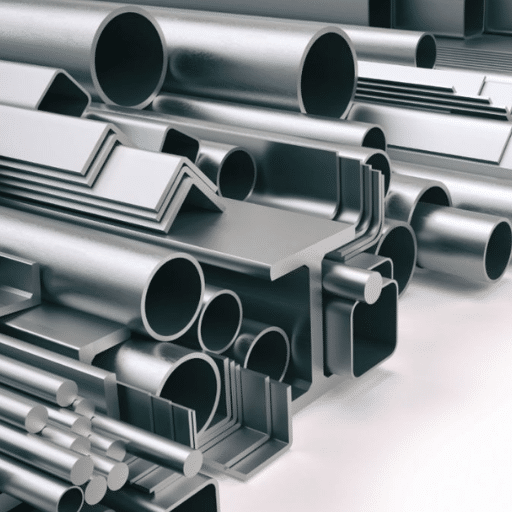
Steel is an alloy with multiple uses, and its heat conductivity is different depending on the composition and treatment. In general, steel has a lower thermal conductivity than pure metals like copper or aluminum, but its strength and durability make it a material of choice across many sectors. Here’s a rundown of various steels along with their thermal conductivity values:
🔧 Carbon Steel
~43 W/m·K
Key Applications: Structural components, pipelines, and bridges because of the steel’s remarkable strength and reasonable thermal conductivity.
✨ Stainless Steel
~14-16 W/m·K
Key Applications: Kitchenware, medical devices, and chemical processing owing to stainless steel’s corrosion resistance and less heat transfer.
⚒️ Tool Steel
~20-30 W/m·K
Key Applications: Cutting tools, dies, and molds where heat management and wear resistance are crucial.
⚙️ Alloy Steel
~26-48 W/m·K
Key Applications: Parts for cars, power plants, and pipes, combining flexibility and average heat performance.
🛡️ Galvanized Steel
~45-50 W/m·K
Key Applications: Roofing, fencing, and outdoor structures that are protected with a zinc layer for corrosion resistance, thus enjoying the benefits of durability.
💡 These values illustrate the significant influence of material composition on the thermal conductivity of steel, which in turn makes it suitable for demanding applications in various industries.
Understanding Steel as a Thermal Conductor
Thermal conductivity of steel is one of its main characteristics and consequently, it is a material that has a wide range of uses in industrial and engineering fields. The measurement indicates how well heat can be conducted through the steel and its value changes according to the alloy and structure of the steel. Here below is an exhaustive enumeration of the five steel types that are mostly checked for thermal conductivity and applications:
- 1
Stainless Steel (300 Series)
Thermal Conductivity: ~14-16 W/m·K
Key Applications: Due to its low thermal conductivity and corrosion resistance, this steel is used in kitchen equipment, heat exchangers, and medical instruments.
- 2
Carbon Steel
Thermal Conductivity: ~43-58 W/m·K
Key Applications: Mechanical strength and thermal performance of carbon steel are moderate; hence, it is preferred in construction, automotive parts, and pipelines.
- 3
Galvanized Steel
Thermal Conductivity: ~45-50 W/m·K
Key Applications: This type of steel is often found in roofing, fencing, and outdoor structures as it is reliable and resistant to corrosion due to the zinc coating.
- 4
Tool Steel
Thermal Conductivity: ~20-30 W/m·K
Key Applications: Cutting and shaping tools, heat conductivity, strength, and wear resistance are the main criteria where this steel ranks high.
- 5
High-Speed Steel (HSS)
Thermal Conductivity: ~20-28 W/m·K
Key Applications: In the tool manufacturing industry, it is mainly used for drill bits and end mills where resistance to high friction heat is a must.
The data presented here illustrates how versatile the steel has been as a thermal conductor and that it is possible to develop required properties for the various applications through careful alloying and heat treatment.
Factors Affecting the Thermal Conductivity of Steel
The thermal conductivity of steel is affected by a number of factors, with the most significant ones being changes in the alloy composition, structure, and the conditions under which it is used. Following are five main factors that influence the thermal conductivity of steel and their descriptions:
Alloy Composition
Steel is a mixture of metals and non-metals including carbon, chromium, nickel, and molybdenum. These alloying elements may perturb the crystalline structure and impede the electron mobility thereby lowering thermal conductivity. A case in point is stainless steel, which contains a large amount of chromium and nickel, having a conductivity about half that of plain carbon steel.
Carbon Content
In steel, carbon content largely determines its thermal properties. More carbon in the material means that thermal conduction is usually lowered because of the more extensive lattice distortion. For example, low-carbon steel generally has higher thermal conductivity than high-carbon steel.
Crystalline Structure
The orientation of atoms in the steel—body-centered cubic (BCC), or face-centered cubic (FCC)—plays an important role in determining the degree of conduction of heat. FCC crystal forms typical of austenitic steels generally have a lower thermal conduction efficiency than BCC crystal forms like those in ferritic steels.
Temperature
Steel’s thermal conductivity is temperature-dependent. When heating the material, the increased phonons’ and electrons’ scattering usually causes the thermal conductivity to drop. Still, some particular alloy steels may have unusual thermal conductivity behavior depending on their alloying elements.
Impurities and Defects
The number of impurities, voids, and grain boundaries in the material negatively influence the flow of electrons and phonons, which, in turn, leads to a decrease in thermal conductivity. A steel that has fewer imperfections and a better distribution of different microstructures usually has better thermal conductivity characteristics.
✅ Key Takeaway: To determine and control these factors will provide a pathway for the steel industry to meet the thermal performance requirements in applications ranging from construction to advanced industrial tools.
Comparing the Thermal Conductivity of Carbon Steel and Stainless Steel
Concise Answer: Carbon steel has higher thermal conductivity than stainless steel, making it better for heat transfer applications, while stainless steel excels in corrosion resistance and stability at high temperatures.
Comparison Table
Measuring Thermal Conductivity

Thermal conductivity represents the quantity of heat that a solid can transmit. It is an important property with regard to the selection of a material for a given application, particularly in the building, electronics, and manufacturing industries. There are several techniques available for the accurate measurement of thermal conductivity. Here are the five most commonly used methods along with their details:
Guarded Hot Plate Method
- A steady-state method that is most suitable for solid materials testing.
- The process consists of a sample held between two plates at different temperatures, and the heat transfer is recorded.
- Typical application for insulation materials.
Laser Flash Analysis
- A transient method applied to solid and semi-solid forms.
- A laser pulse is used to raise the sample’s surface temperature and the resultant thermal rise is recorded over a period of time.
- Designed for top-notch accuracy tests, especially for minute samples.
Heat Flow Meter Method
- Apposite for flat, solid specimens in steady-state conditions.
- Heat flow meters document the heat conduction through the specimen from one plate to the other.
- Suitable for evaluation of insulating panels and building materials.
Transient Plane Source (TPS) Method
- A technique applicable for both solid and liquid materials.
- An electrically-powered sensor is placed right on the sample.
- It gives quick results and is being used for a wide range of materials including polymers and metals.
Hot Wire Method
- It is a common method for the determination of thermal conductivity in liquids and gases.
- A wire that is thin and heated is placed inside the sample and the amount of energy that has gone into the sample is measured.
- Very good for liquids and small-scale applications.
These techniques provide for the general and precise measurements of thermal conductivity, thus meeting the demand of different types of materials as well as industrial needs.
Common Measurement Techniques for Thermal Conductivity
Knowledge about thermal conductivity of materials is extremely important in many scientific and industrial applications. The following are the five techniques that are usually employed for thermal conductivity measurements, with detailed descriptions and examples of data:
📊 Steady-State Method
Under this method, measurements of thermal conductivity are done where the temperature gradient remains the same throughout the measurement period. Due to its reliability and accuracy, it is ideal for solids. However, slow testing and the uniformity of the material required are the main limitations.
Example Data: The thermal conductivity of high-purity copper is around 400 W/m·K at room temperature when measured by this method.
⚡ Laser Flash Analysis (LFA)
Heats one side of a sample using a short laser pulse and the temperature increase on the opposite side is recorded. This is the technique of choice for solids and powders with medium to high thermal conductivity.
Example Data: The thermal conductivities that can be measured by this method range from 0.1 W/m·K up to several hundreds of W/m·K.
🔥 Transient Hot Wire Method
The method measures thermal conductivity by applying a heat pulse to a thin wire which is in contact with the material. The method is particularly suited for measuring the thermal conductivity of liquids and gases.
Example Data: The thermal conductivity of water is measured to range from 0.58 to 0.6 W/m·K at room temperature using this method.
🛡️ Guarded Hot Plate Technique
The method is a steady-state one, where a known quantity of heat is applied to the sample, and the temperature difference across it is measured. Low and high thermal conductivity materials can be tested effectively with this method.
Example Data: The thermal conductivity of polystyrene foam has been reported to be as low as 0.03 W/m·K using this technique.
⚙️ 3-Omega Method
The method involves using a thin metal strip or wire to serve both as a heater and a sensor for measuring thermal conductivity. This technique is often used for thin films and small-scale thermal conductivity measurements.
Example Data: The thermal conductivity of silicon thin films can vary from 10 to 150 W/m·K depending on the results obtained with this technique.
All techniques are best suited for particular types of materials and testing scenarios but they also offer a diverse range of options for the accurate characterization of thermal conductivity in different applications.
Instruments Used in Measuring Thermal Conductivity
1
Laser Flash Apparatus (LFA)
Technology Overview:
A short laser pulse is used to heat the sample, and the thermal diffusivity is calculated based on the temperature rise of the sample.
Application:
Very successful with bulk materials, ceramics, and metals.
Example Data: The value of thermal conductivity for aluminum ascertained through LFA is nearly 205 W/m·K.
2
Hot Disk Thermal Constants Analyzer
Technology Overview:
A transient plane source (TPS) method applied for the simultaneous measurement of thermal conductivity, thermal diffusivity, and specific heat capacity.
Application:
Liquid, solid, and composite samples are analyzed efficiently.
Example Data: Polyethylene composites usually display values in the range of 0.1 to 0.5 W/m·K when this instrument is employed.
3
Guarded Hot Plate (GHP)
Technology Overview:
An indirect method that places the sample between two plates, one plate being at a higher temperature while the other is kept at a lower temperature, to ascertain the amount of heat conducted.
Application:
Commonly employed for the testing of insulating materials and plastics.
Example Data: GHP analysis of expanded polystyrene reveals its thermal conductivities to be in the range of 0.03 to 0.04 W/m·K.
4
Thermal Conductivity Meters (TCM)
Technology Overview:
Mostly facilitate fast and easy measurements with heat sensors and temperature gradients being used.
Application:
Ideal for evaluating construction materials and soft materials, like foam, testing.
Example Data: Cement mortar conductivity is found to be in the range of 1.1 to 1.4 W/m·K as determined by TCM.
5
3-Omega Method Instrument
Technology Overview:
Thermal conductivity is determined by measuring and analyzing the oscillations in heating and temperature of a wire of metal subjected to alternating current.
Application:
Highly recommended for testing of thin films and at the nanoscale level.
Example Data: The 3-Omega method determines silicon thin films to have a thermal conductivity of 50 to 130 W/m·K, depending on the characteristics of the film.
Challenges in Measuring the Thermal Conductivity of Different Metals
Measuring the thermal conductivity of metals is quite challenging mainly due to the special characteristics of the metals and the different testing conditions. The following are five major challenges with their corresponding details and data:
⚠️
Measurement Precision at High Conductivity Levels
Metals like copper and silver have the highest thermal conductivity, which makes them difficult to measure exactly as the sensitivity of the common instruments is not enough.
Example Data: The thermal conductivity of copper is about 385 W/m·K, which might account for the presence of errors if high-precision instruments are not applied.
🔍
Surface Roughness and Contact Resistance
Readings can be affected by surface differences and less-than-perfect contact between samples and measuring devices. This is particularly true in the case of polished and coated metal samples.
Example Data: The thermal conductivity of aluminum can be determined differently with a difference of about 10-15% depending on the surface quality employed.
🌡️
Influence of Temperature Variation
Usually, the thermal conductivity of metals goes down or up depending on the temperature, that’s why it is so demanding and labor-intensive to calibrate and control.
Example Data: The thermal conductivity of steel drops from 25 W/m·K at room temperature to nearly 14 W/m·K at cryo-temperature.
⚗️
Material Impurities and Alloy Composition
Even small impurities or slight changes in the alloy composition can have a huge effect on the thermal conductivity making it difficult to compare and even test metals consistently.
Example Data: Pure tungsten has a thermal conductivity of about 174 W/m·K, while the tungsten that is alloyed might drop down to less than 100 W/m·K based on the nature of the additive.
🔬
Thin Films and Nano-scale Materials
The task of measuring the thermal conductivity of thin metal films or nano-engineered materials is inherently difficult because of the size effects and constraints related to heat dissipation.
Example Data: Thin films of gold can possess thermal conductivities as low as 10-15 W/m·K, which is very much below the values of bulk products.
The above-mentioned challenges can be tackled by researchers with the help of sophisticated instruments and new methods for the sake of acquiring more accurate and reliable thermal conductivity results for a variety of metallic materials.
Influencing Factors on Thermal Conductivity
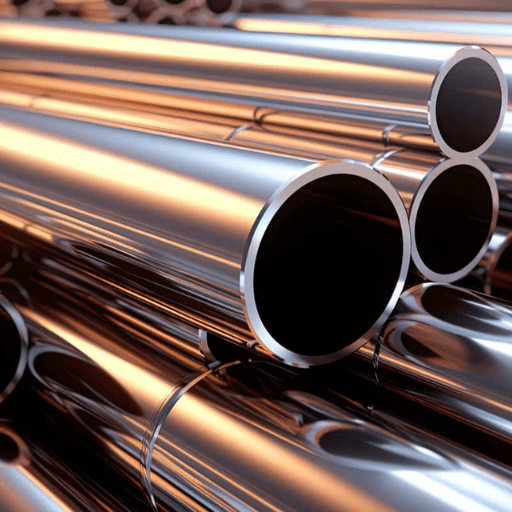
The thermal conductivity of metallic materials is affected by several factors, especially if they are in the form of thin films or nano-engineered structures. Such factors contribute a lot to the transfer of heat and are, therefore, very important in developing new materials and coming up with thermal management strategies. The following are five most important factors:
Material Composition
The thermal conductivity of a material is greatly influenced by its kind and purity. Impurities and different metals used in the alloy usually cause the scattering of phonons and electrons thus making heat transfer less efficient.
Example Data: Thermal conductivity of pure copper is around 400 W/m·K, while that of brass (an alloy) is usually 100-150 W/m·K.
Grain Size
In polycrystalline materials, smaller grains create more boundaries which are the scattering centers of electrons and phonons. As a result, the average distance that heat carriers can travel without being scattered is reduced, and thermal conductivity is lowered.
Example Data: The thermal conductivity of nanocrystalline silicon is almost 10 times lower than that of its bulk counterpart.
Temperature
In general, thermal conductivity of metals decreases with the increase in temperature due to the phonon-phonon scattering and electron-phonon interactions becoming more pronounced.
Example Data: The thermal conductivity of aluminum drops from 237 W/m·K at 300 K to approximately 180 W/m·K at 500 K.
Film Thickness and Size Effects
The thermal conductivity of thin films is lower due to the scattering of surface and quantum size effects, which restrict the movement of heat carriers.
Example Data: The thermal conductivities of gold thin films with thicknesses below 100 nm are reported to be up to 80% lower than that of the bulk material.
Defects and Dislocations
Vacancies, dislocations, and interstitial atoms are examples of structural defects that distort the atomic lattice and scatter heat carriers, leading to lower thermal conductivity.
Example Data: It has been observed that defect-engineered diamond films exhibit up to 50% reduction in thermal conductivity as compared to defect-free diamonds.
✅ The necessity of understanding these factors cannot be overemphasized, as they are the very basis upon which the improvements and modifications of thermal conductivity in advanced materials for practical applications are built.
Impact of Temperature on Thermal Conductivity
Temperature has a major effect on thermal conductivity, and it is responsible for altering the interactions of heat carriers, like phonons and electrons, within a substance. Depending on the material type and its characteristics, the temperature versus thermal conductivity relation can be different. Below are five principal observations along with relevant data about the role of temperature in thermal conductivity:
Increase in Phonon Scattering at High Temperatures
At higher temperatures, thermal conductivity drops because of the increased scattering of phonons among themselves.
Example Data: Silicon loses around half of its thermal conductivity at 1000 K compared to 300 K.
Reduced Electron Contribution in Metals at Low Temperatures
In the case of metals, the electron contribution to the conductivity of heat decreases when the temperature drops, and this leads to an overall decrease in the conductivity of the metal.
Example Data: Copper’s thermal conductivity below 50 K is very low because there is a great reduction of electron mobility.
Peak Thermal Conductivity in Low-Temperature Crystalline Materials
Crystals, in general, have a maximum thermal conductivity at a certain low temperature which is then followed by a drop due to phonon scattering.
Example Data: Diamond reaches its maximum thermal conductivity at around 80 K, which is 2000 W/m·K.
Superconducting Behavior and Thermal Conductivity Collapse
Superconducting materials display a dramatic decrease in thermal conductivity at their critical temperature which is when they change from a normal to a superconducting state.
Example Data: Lead has a rapid thermal conductivity change when it goes through the transition at approximately 7.2 K.
Glass and Amorphous Materials Show Weak Temperature Dependence
The disordered structure of glass and other amorphous materials is the main reason for their change in thermal conductivity with temperature being relatively weak.
Example Data: The thermal conductivity of silica glass varies from 1.1 to 1.4 W/m·K, showing only a slight change with a temperature increase from 100 K to 500 K.
Through these examples, it is evident that temperature has a profound effect on thermal conductivity and that there is a wide range of mechanisms causing this effect in different materials. Moreover, these findings stress the need to take into account the temperature-dependent behavior in the design of materials for thermal management applications.
Effects of Alloying Elements in Steel
Alloying elements are the ones without which steel is not the alloy with a specified hardness, strength, and so on. The addition of these elements is done in different proportions to get certain characteristics that are meant for special applications. Here are the five main alloying elements in the steel industry along with their influence and data:
Carbon (C):
Carbon is the main ingredient of steel and it is a great contributor to the hardness and strength of it.
Example Data: The increase of carbon from 0.2% to 0.8% can lead to a tremendous increase in tensile strength up to 50% but the opposite effect on ductility will be the case.
Chromium (Cr):
Steel coating with chromium improves resistance to corrosion, hardness, and wear, which are the essential properties of stainless steel.
Example Data: The presence of 12% chromium results in a stainless steel with a high corrosion-resistance property.
Nickel (Ni):
Increased toughness, impact strength, and corrosion resistance are some of the main benefits of nickel but only its good at low temperatures.
Example Data: Steels containing from 1% to 5% nickel are the main ones for low-temperature applications.
Manganese (Mn):
Tensile strength, wear resistance, and toughness are the contributions of manganese by breaking the brittleness of sulfur.
Example Data: Manganese content varies mostly between 0.3% and 2.0% in the majority of steel grades.
Molybdenum (Mo):
Molybdenum increases strength and resistance to corrosion at high temperatures and hardenability.
Example Data: The addition of molybdenum at the levels of 0.2-0.5% is a common practice in alloy steels for the application of high-temperature steel.
The manipulation and mixing of these materials open up a lot of industrial applications for steel ranging from construction to aerospace engineering.
Comparison of Thermal Conductivities Across Different Grades of Stainless Steel
Concise Answer: Thermal conductivity varies across stainless steel grades, with austenitic grades like 304 and 316 having lower values (~15-25 W/m·K) compared to ferritic grades like 430 (~26 W/m·K), influenced by composition and temperature.
Comparison Table
|
Key Point |
304/316 (Austenitic) |
430 (Ferritic) |
17-4 PH |
|---|---|---|---|
|
Thermal Conductivity |
~16-21 W/m·K |
~26 W/m·K |
~18-23 W/m·K |
|
Corrosion Resistance |
High |
Moderate |
High |
|
Strength |
Moderate |
High |
Very High |
|
Applications |
Food, medical |
Automotive, appliances |
Aerospace, marine |
|
Cost |
Higher |
Lower |
Higher |
|
Temperature Impact |
Increases with temp |
Increases with temp |
Increases with temp |
Applications of Thermal Conductivity in Industries
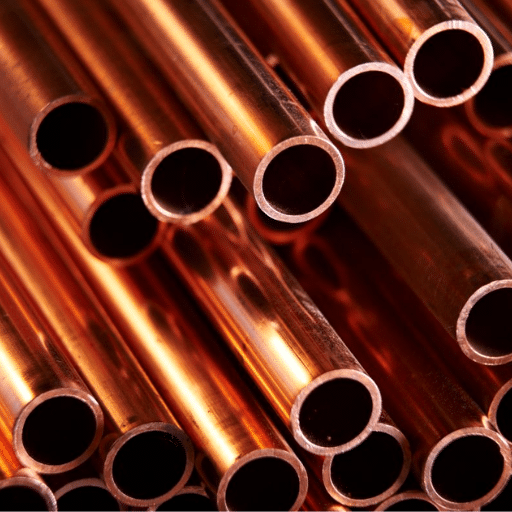
Thermal conductivity is a property that defines the material’s ability to conduct heat and it is a very important factor in the selection of materials and design of systems for different industrial applications. Below is a list of five applications with detailed explanations:
Electronics Industry
Overheating is the main problem for electronic devices, thus efficient thermal management is necessary. Heat sinks and circuit boards are made of highly thermally conductive materials such as copper or aluminum which help in the cooling of microchips and processors by dispersing their heat.
Aerospace Industry
Selection of materials with high thermal conductivity is the key to the creation of aerospace structures and parts that can survive the most extreme temperature changes. Top-notch materials like titanium alloys are employed not only to support the structure but also to help in the fast heat transfer during the high-speed trip or re-entry into the atmosphere.
Automotive Industry
Thermal properties of materials should be exact for the automotive systems such as engines and brakes. Thermal conductivity of metals is adjusted in such a way that they can be used in different parts like radiators and brake pads to encourage performance and to guarantee safety.
Construction Industry
Insulation materials are made of less thermally conductive materials such as fiberglass or polystyrene and they are used for controlling the temperature of the buildings and improving energy efficiency. On the other hand, the requirement of thermal conductivity is the same for concrete or steel in the structural design.
Energy Sector
The property of thermal conductivity is of utmost importance in power generation and energy storing systems. For example, in the case of solar panels, the introduction of silicon as the thermal property improver not only makes the energy absorption and use much more efficient but also the heat exchangers are operating with such metals having high thermal conductivity because of the effective temperature regulating requirement.
In all these instances, the importance of thermal conductivity in various applications can be seen as an industrial revolution and system efficiency optimization factor.
Role of Thermal Conductivity in Construction and Manufacturing
The thermal conductivity is an essential factor in construction and manufacturing and thus it is majorly regarded among the material properties influencing its selection, building design, and energy efficiency. Below are five important uses and instances of thermal conductivity in these sectors:
Insulation Materials
Insulation materials that have low thermal conductivity are such as fiberglass and polyurethane foam and they are very commonly used in buildings as they help in transferring the heat to a very minimal extent. This both maintains the set temperatures and cuts down the costs of heating and cooling thus making the process more energy-efficient.
Building Materials
The use of high thermal conductivity materials such as concrete and steel is done where the heat transfer is made efficient, for instance, in some structural components. On the other hand, the low conductivity materials are preferred in walls and roofs to prevent unwanted heat loss or gain.
HVAC Systems
Heat exchangers are components that rely on high thermal conductivity materials, such as copper or aluminum, in heating, ventilation, and air conditioning (HVAC) systems for the efficient transfer of thermal energy.
Glass and Windows
Double-glazed windows are built with low conductivity gas layers, such as argon, to prevent the transfer of heat while allowing visibility. This development has become a significant factor in the thermal insulation of contemporary architectural styles.
Manufacturing Equipment
Industrial tools and machines like molds and dies often use aluminum alloys due to their high thermal conductivity for cooling purposes to the rapidity of cooling, improve production efficiency, and maintain product quality during manufacturing processes.
Through the clever choice of the materials with the desired thermal conductivity features, the industries can optimize their energy usage, cut down on costs, and improve the overall performance of their systems.
Importance in Electrical Conductivity and Electronics
To me, the thermal and electrical conductivity in electronics is important because of the fact that they are the main factors that determine how efficiently devices are operated and how long they last. Gold and silver are among the few materials with high electrical conductivity that are indispensable in making dependable circuits and lessening energy wastage. Moreover, materials with good thermal conductivity are important in the cooling of the electronic devices by heat absorption and by keeping hot air away from the sensitive electronic parts and hence keeping the electronic systems operating at their best.
Use of Thermal Conductors in Thermal Management
Thermal conductors are essential for heat removal and keeping electronic devices at a stable temperature. Creating a good thermal management system is a must in computers, smartphones, and industrial machinery applications, where high heat can cause component failure and performance degradation. The choice of conductors is basically dependent on material property which allows fast and effective heat transfer. A list of thermal conductors that are normally used for heat management is below:
Copper
Copper, due to its extremely high thermal conductivity of around 400 W/mK, is considered by many as the top conductor of heat. It is mostly found in electronic devices heat sinks and cooling systems since it properly draws off heat from the electronic parts and throws it to the air surrounding them.
Aluminum
Aluminum, with its thermal conductivity of 205 W/mK, is a good option from all aspects—cost, weight, and thermal performance. Thus, it is regularly found in heat sinks, casings, and thermal management practices that require light materials.
Graphite
Graphite’s thermal conductivity is anisotropic which is a great characteristic since it allows for very high efficiency heat transport in one direction (up to 1500 W/mK) and it is still conductive but not that much in another. Such traits make graphite a good candidate for the production of thermal interface materials, heat spreaders, and flexible components in small device designs.
Diamond
A diamond has the highest thermal conductivity—over 2000 W/mK—but its price limits its application to upscale products like cutting-edge semiconductor devices and laser systems where maximum heat dissipation is crucial.
Thermal Interface Materials (TIMs)
TIMs like thermal paste and phase change materials are specially designed to facilitate the heat transfer process by improving thermal contact between the surfaces. Their thermal conductivity depends on the composition but they are still needed to fill in the gaps and help transfer heat between the components more effectively.
The employment of these thermal conductors as part of the thermal management strategies enables the engineers to ensure the stability and the lifetime of the electronic systems of today. The special features of the conductors make it possible to handle heat in an efficient way that meets the rising demand for advanced technology applications.
References
- ScienceDirect:
Title: Prediction of thermal conductivity of steel
Description: Discusses a model for predicting the thermal conductivity of steel based on composition and temperature. - ScienceDirect:
Title: Experimental determination of the high-temperature thermal conductivity of steel powders
Description: Presents experimental data on the thermophysical properties of steel powders, including thermal conductivity. - Polish Academy of Sciences:
Title: Correlations for the thermal conductivity of selected steel grades as a function of temperature in the range of 0–800°C
Description: Provides correlations for thermal conductivity across various steel grades and temperatures.
Frequently Asked Questions (FAQ)
What is the thermal conductivity of steel?
The thermal conductivity of steel typically ranges from 15 to 50 watts per meter per kelvin (W/m·K), depending on the specific grade and composition of the steel. For example, carbon steel tends to have a higher thermal conductivity compared to stainless steel, which often exhibits lower thermal conductivity values.
How do different grades of stainless steel affect thermal conductivity?
Different grades of stainless steel exhibit varying thermal conductivities. For instance, 304 stainless steel has a higher thermal conductivity compared to 316 stainless steel. The presence of alloying elements such as nickel and chromium in stainless steel can lower its ability to conduct heat, making it less efficient for heat transfer applications.
What factors influence the thermal conductivity of metals?
The thermal conductivity of metals is influenced by factors such as the type of metal, its microstructure, temperature, and impurities. Metals with high thermal conductivity, like copper and aluminum, have a lattice structure that allows free electrons to move easily, enhancing their ability to conduct heat.
How does the thermal conductivity of carbon steel compare to stainless steel?
Carbon steel generally has a higher thermal conductivity than stainless steel. This means that carbon steel can transfer heat more efficiently, making it ideal for applications that require effective heat transfer, whereas stainless steel is often chosen for its corrosion resistance and aesthetic appeal despite its relatively low thermal conductivity.
What are the thermal properties of metals?
The thermal properties of metals include thermal conductivity, specific heat, thermal expansion, and heat capacity. These properties determine how effectively a metal can conduct heat, respond to temperature changes, and expand when heated. Understanding these properties is essential for selecting materials for heat sinks and other thermal management applications.
What is the importance of understanding the thermal conductivity of different metals?
Understanding the thermal conductivity of different metals is crucial for applications that involve heat transfer. Materials with high thermal conductivity are preferred for heat sinks and other thermal conductors, while those with low thermal conductivity are used for insulation purposes. This knowledge helps engineers and designers choose the right materials for specific applications.
What is the impact of temperature on the thermal conductivity of steel?
The thermal conductivity of steel can change with an increase in temperature. Generally, as the temperature rises, the thermal conductivity of steel may decrease due to increased thermal expansion and decreased electron mobility. This means that at elevated temperatures, steel may not conduct heat as efficiently as at lower temperatures.
What are the applications of steel based on its thermal conductivity?
Steel’s thermal conductivity makes it suitable for various applications, including construction, automotive, and manufacturing industries. It is often used in heat exchangers, boilers, and piping systems where efficient heat transfer is required. The choice of steel grade can significantly affect the performance of these applications in terms of heat management.
What is the significance of thermal insulation in relation to steel?
Thermal insulation is significant in applications involving steel, as it helps reduce heat loss and improve energy efficiency. By using insulation materials with low thermal conductivity, it is possible to minimize the quantity of heat that escapes from steel structures or systems, leading to better performance and lower energy costs over time.

